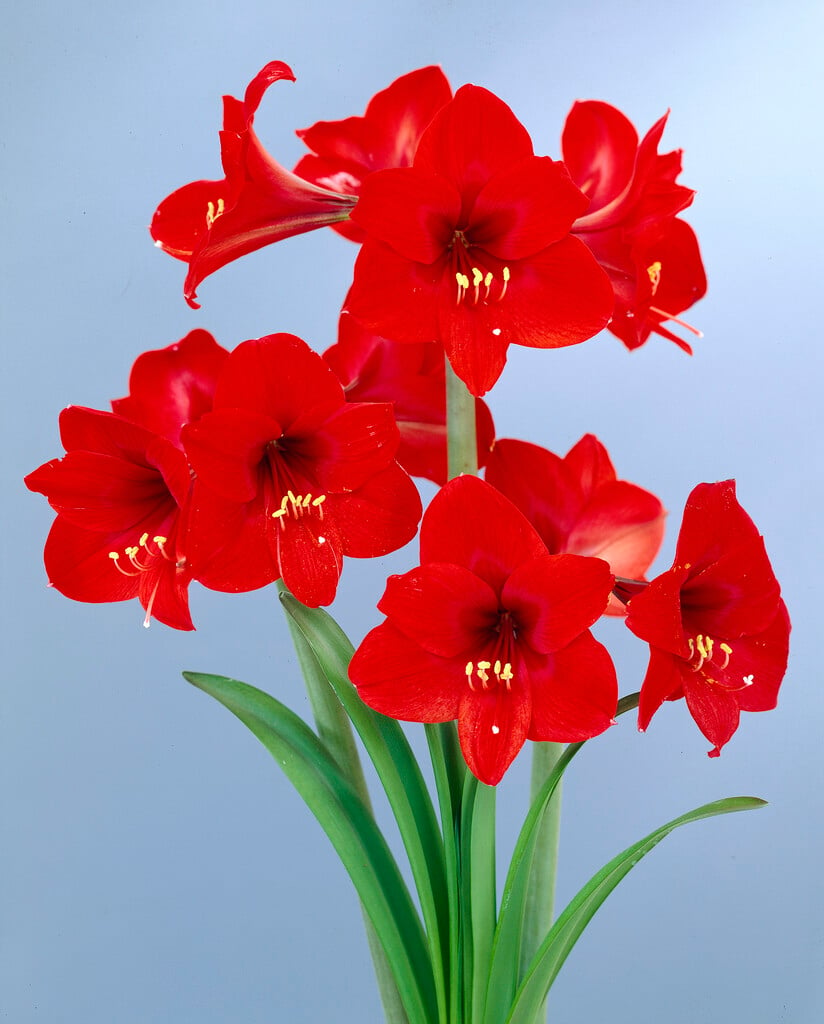Size
Ultimate height
0.1–0.5 metresTime to ultimate height
2–5 yearsUltimate spread
0.1–0.5 metresGrowing conditions
Moisture
Moist but well–drainedpH
NeutralColour & scent
| Stem | Flower | Foliage | Fruit | |
| Spring | Red | Green | ||
|---|---|---|---|---|
| Summer | Green | |||
| Autumn | ||||
| Winter | Red | Green |
Position
- Full sun
- Partial shade
Aspect
East–facing or South–facing or West–facing
Exposure
Sheltered Hardiness
H3Botanical details
- Family
- Amaryllidaceae
- Native to GB / Ireland
- No
- Foliage
- Deciduous
- Habit
- Columnar upright
- Potentially harmful
- Harmful if eaten. Wear gloves and other protective equipment when handling. Pets (dogs, cats): Harmful if eaten. For further information and contact numbers regarding pets, see the HTA guide to potentially harmful plants
- Genus
Hippeastrum are deciduous bulbous perennials with slightly fleshy, strap-shaped leaves and stout, leafless stems bearing umbels of large, funnel-shaped flowers usually in winter or spring
- Name status
Accepted
How to grow
Cultivation
Plant bulbs in the autumn with the neck and shoulder above the soil surface. Grow in a peat-free, loam-based potting compost. Water sparingly until in active growth, water regulary when in growth and feed fortnightly with a balanced liquid feed. After flowering, reduce the watering as the leaves die off. Keep dry when dormant. This hippeastrum can also be planted in a dry, sunny border but will need winter protection. See hippeastrum cultivation
Propagation
Propagate by seed as soon as they are ripe, keep seedlings growing without a dormant period to encourage earlier flowering. Remove bulb offsets in autumn
Suggested planting locations and garden types
- Houseplants
- Conservatory and greenhouse
- Cut flowers
Pruning
Cut back flowering stems as they go over. Cut back leaves as they go yellow, when bulb is going into dormancy
Pests
May be susceptible to bulb scale mite, large narcissus bulb fly and slugs and snails throughout the summer months
Diseases
May be susceptible to various fungal diseases
Get involved
The Royal Horticultural Society is the UK’s leading gardening charity. We aim to enrich everyone’s life through plants, and make the UK a greener and more beautiful place.
